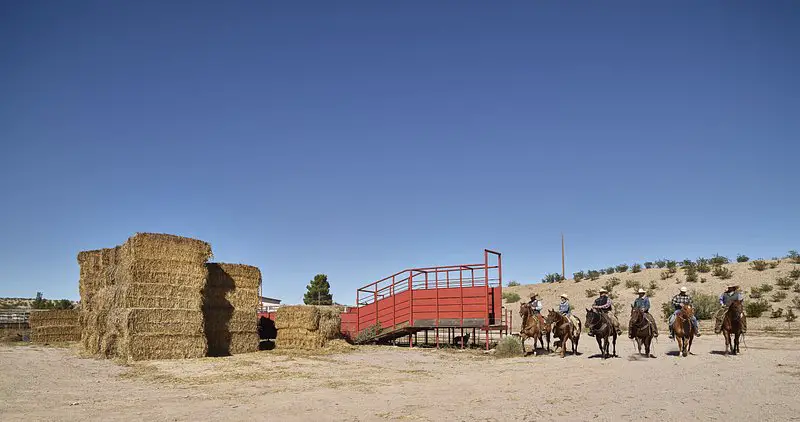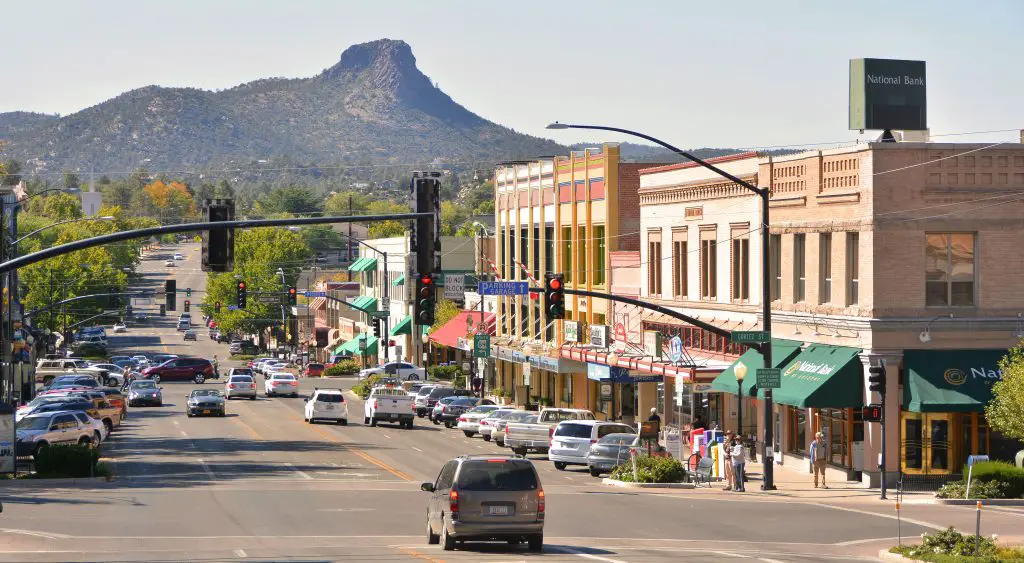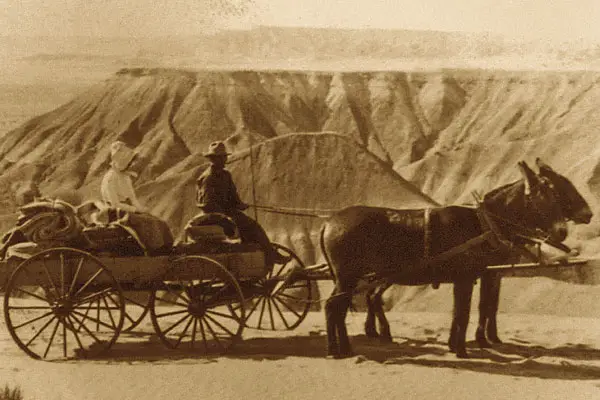Arizona’s journey to statehood is a rich narrative etched with struggle, resilience, and aspiration. At the heart of this tale sits the historic city of Prescott.

The role of Prescott in Arizona’s journey to statehood is pivotal, from its establishment as the territorial capital to its profound influence on Arizona’s identity and growth.
Pre-statehood History of Arizona
Before its statehood, Arizona underwent a series of transformations that shaped its trajectory. Initially a part of the Spanish Empire, it later became a part of Mexico following Mexico’s War of Independence. However, the Treaty of Guadalupe Hidalgo in 1848 and the Gadsden Purchase in 1853 saw parts of Arizona transferred to the United States.
The creation of the Arizona Territory in 1863 marked the beginning of a new era, initiating the process of organized governance and development that would eventually culminate in statehood in 1912. The formation of Prescott, Arizona’s first territorial capital, was a key event in this period, significantly impacting the territory’s journey to statehood.
Long before the arrival of European explorers, Arizona was home to various native tribes. These tribes, including the Hohokam, Mogollon, and Ancestral Puebloans, were the first architects of civilization in the region. The Navajo and Apache tribes arrived later, in the 15th century, leaving an enduring mark on Arizona’s cultural tapestry.
Arrival of Spanish Explorers
The late 15th and early 16th centuries were an era of exploration and expansion in the Americas. Arizona caught the attention of Spanish explorers in search of the mythical “Seven Cities of Gold”. Notably, Francisco Vázquez de Coronado altered the course of Arizona’s history with his expeditions.
The territory that would become Arizona was first part of New Spain, then Mexico, and finally became part of the United States, first through the Treaty of Guadalupe Hidalgo and then through the Gadsden Purchase in 1853. This tumultuous history set the stage for the establishment of Prescott and the road to statehood.
Early Establishment of Prescott
The establishment of Prescott marked a significant point in Arizona’s journey to statehood. Birthed amidst the fervour of the mid-19th-century gold rush, Prescott was founded by Arizona’s then-Governor John Noble Goodwin on May 30, 1864. Its ideal location and the presence of abundant natural resources made it a fitting choice as the territorial capital.

The town was envisioned as a beacon of civilization in the desert territory, thereby playing an instrumental role in Arizona’s quest for statehood.
Founding of Prescott: Context and Influences
In the midst of the 19th century, the United States was seized by a fervour for westward expansion spurred by the allure of gold. Arizona, recently added to the country’s southwestern territories, became a focal point of this gold rush.
The territory’s then-governor John Noble Goodwin initiated the establishment of Prescott on May 30, 1864. Its ideal geographic location, coupled with the richness of natural resources, earmarked it as an apt choice for the territorial capital.
Why Prescott was Chosen as the Territorial Capital
Prescott’s designation as the capital wasn’t merely by chance. Factors such as its central location, accessibility to water and timber, and the prosperity promised by the gold mines all played significant roles.
Governor Goodwin envisaged Prescott as the heart of civilization within the vast desert territory. This burgeoning town offered a base for governance and territorial organization – vital ingredients in Arizona’s statehood recipe.
Prescott’s Role in Arizona’s Governance
Prescott’s role as the Territorial Capital was a defining one in Arizona’s journey to statehood. The city served as a cornerstone for governance in the burgeoning territory.
The First Arizona Territorial Legislature convened in Prescott in 1864, laying the foundation for legal codes and key institutions like the University of Arizona. The city also held sway over early laws and policies, with the creation of the Howell Code acting as a catalyst for the establishment of the rule of law in the region.
The First Territorial Legislature in Prescott
The First Arizona Territorial Legislature convened in Prescott in September 1864, a historic milestone for Arizona. In addition to establishing a legal code, this legislature played a role in founding essential institutions, including a university that eventually became the University of Arizona.
Prescott’s status as the capital allowed it to influence early laws and policies that would shape the course of Arizona’s development. The Howell Code, a legal code for the Arizona Territory established by the First Territorial Legislature, laid the groundwork for the rule of law in the region.
Prescott and the Civil War
During the Civil War, Prescott found itself within a territory contested between the Union and the Confederacy. While it was geographically distant from the war’s main theatres, the town wasn’t immune to the conflict’s political and power dynamics.

The Union’s control over Prescott strengthened its claim over the Arizona Territory. This, in turn, cemented Arizona’s affiliation with the Union and propelled its path toward statehood.
The Impact of the Civil War on Prescott
The American Civil War had a direct impact on Prescott and the wider Arizona Territory. The town was far removed from the primary theaters of war, yet it was significantly influenced by the politics and power struggles between the Union and the Confederacy.
The Union’s control of Prescott and the surrounding region was a significant factor in Arizona’s trajectory toward statehood. This control ensured that Arizona, at the end of the Civil War, would remain a part of the Union and continue on its path toward becoming a state.
Transition of Capital and Its Impact
Prescott’s status as the capital of the Arizona Territory wasn’t constant, reflecting the evolving political landscape and growth patterns of the region. Initially shifted to Tucson in 1867 due to a population increase in the south, the capital was returned to Prescott in 1877.
However, with Phoenix’s rise as an economic and population hub in the late 19th century, the capital was once again moved, this time to Phoenix in 1889. This transition marked a crucial phase in Arizona’s maturity, culminating in its statehood in 1912.
Movement of Capital to Tucson, Then Back to Prescott
The capital of the Arizona Territory was moved to Tucson in 1867 due to southern Arizona’s population increase. However, in 1877, Prescott regained its status as the territorial capital. This shifting of capital reflected the political power dynamics and growth patterns within Arizona during this time.
Phoenix’s rise as an economic and population center in the late 19th century led to its designation as the capital in 1889. The final shift of capital from Prescott to Phoenix highlighted the maturation of the Arizona Territory and set the stage for its statehood in 1912.
Prescott’s Cultural Impact on Arizona
Prescott’s cultural influence on Arizona is as significant as its political contributions. The city’s rich frontier history, characterized by events such as the world’s oldest rodeo, has shaped Arizona’s unique Southwestern identity.
Moreover, Prescott’s distinctive architectural blend of the Old West and modern styles, visible in its historical buildings, contributes to Arizona’s cultural heritage. Thus, Prescott has played an indispensable role in the creation of Arizona’s cultural fabric.
Prescott’s Frontier Culture
Prescott’s rich history, including its early establishment and frontier culture, significantly contributed to Arizona’s distinctive Southwestern character. Iconic events, like the world’s oldest rodeo, have their roots in Prescott, thereby influencing the larger cultural narrative of Arizona.
Prescott’s Victorian architecture and well-preserved historical buildings, like the Yavapai County Courthouse and Whiskey Row, reflect a unique blend of the Old West and modernity. This architectural style has influenced Arizona’s architectural identity and contributes to its overall cultural heritage.

Prescott’s Modern Role: Legacy and Continuation
Despite its deep historical roots, Prescott is not merely a relic of the past; it continues to be a vital player in Arizona’s present. From its origins as a territorial capital, Prescott has blossomed into a modern city while maintaining its historical charm. It now attracts visitors with its engaging blend of history, arts, and outdoor attractions.
Prescott’s enduring commitment to preserving its historical landmarks also serves as a model for other cities in Arizona, demonstrating the importance of maintaining connections to the past even amidst progress. This balance between preserving heritage and embracing modernity makes Prescott a key influence in Arizona’s ongoing development.
Prescott: From Territorial Capital to Thriving City
From its early days as the territorial capital, Prescott has grown into a thriving modern city. Despite its evolution, it retains its historic charm, attracting visitors with its rich history, outdoor recreation, and vibrant arts scene. Today, Prescott is an essential part of Arizona’s social and economic fabric.
Prescott’s influence on Arizona extends beyond its historical significance. The city’s successful blend of history and modernity serves as a model for development across the state. Additionally, Prescott’s continual efforts in historical preservation underscore the importance of maintaining a tangible link to Arizona’s past.
FAQs: The role of Prescott in Arizona’s journey to statehood
Why was Prescott chosen as the first territorial capital of Arizona?
Prescott was chosen as the first territorial capital of Arizona due to its strategic location and the abundance of natural resources. Additionally, the then-Governor John Noble Goodwin, who was instrumental in its establishment, envisioned Prescott as a beacon of civilization in the desert territory. This vision aligned with the larger goal of organizing and developing the Arizona Territory on its path to statehood.
How did the shifting of the capital from Prescott to Tucson, and eventually Phoenix, affect Arizona’s journey to statehood?
The shifting of the capital from Prescott to Tucson and eventually to Phoenix reflected the evolving political, economic, and demographic landscape of Arizona. Each shift was indicative of the growth and maturation of the territory. The final move to Phoenix, which had grown into a significant economic and population center, signified the readiness of Arizona to attain statehood.
What are some notable contributions of Prescott to Arizona’s cultural identity?
Prescott significantly contributed to Arizona’s cultural identity through its rich frontier history and distinct architectural style. Events such as the world’s oldest rodeo, which originated in Prescott, shaped Arizona’s unique Southwestern identity. Moreover, Prescott’s blend of Victorian architecture and preserved historical buildings added to Arizona’s cultural heritage.
How does Prescott continue to influence Arizona today?
Prescott continues to influence Arizona today by serving as a model for blending history with modernity. The city’s commitment to historic preservation, coupled with its thriving arts scene and outdoor recreation opportunities, enriches Arizona’s social and economic landscape. Moreover, Prescott’s success in maintaining its historical charm while fostering modern growth offers valuable lessons for other cities in the state.
Conclusion
In Arizona’s fascinating journey to statehood, the role of Prescott stands out. From its designation as the territorial capital to its shaping of Arizona’s legal, political, and cultural landscapes, Prescott has been instrumental in molding Arizona’s identity. Today, as a vibrant and thriving city, Prescott continues to influence Arizona, underscoring its enduring legacy.
Whether it’s the establishment of the territorial government, the introduction of significant policies, or the creation of a distinctive frontier culture, Prescott’s contributions are embedded in Arizona’s statehood narrative. While the capital has shifted, and Arizona has grown and evolved, the legacy of Prescott’s pivotal role remains.
For those keen on exploring the depths of Arizona’s history, understanding Prescott’s role provides valuable insights. A visit to this historic city not only offers a trip back in time but also a glimpse into the state’s future – a testament to the enduring significance of Prescott in Arizona’s journey.



Leave a Comment
You must be logged in to post a comment.